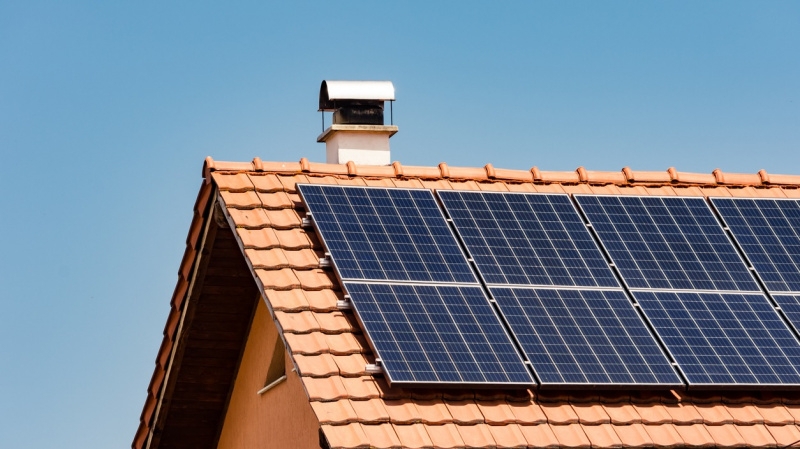Solar Panel Costs in 2025: Are They Still Worth the Investment?

As solar energy continues to reshape the U.S. power landscape, many homeowners in 2025 are asking the same question: Are solar panels still worth the investment? With the average cost of installing a standard home solar system at $29,360 before incentives, it's a fair question. But thanks to federal tax credits, the net price can drop to around $20,552, and local incentives may reduce costs even further. Choosing the right solar energy equipment supplier can also have a major impact on both system quality and long-term savings.
Solar Costs Are Falling—But Location Matters
Over the past two decades, the average price of solar installation has dropped nearly $15,000, according to the Solar Energy Industries Association. This dramatic decrease has made solar more attainable for homeowners across the country.
However, solar panel costs still vary significantly by state. Factors like labor costs, permitting fees, utility company policies, and state-level incentives all influence the final price tag. For example, states like California and New Jersey tend to have higher installation costs but also more generous solar incentives, while Texas or Florida may offer lower installation costs but fewer rebates.
To get the most accurate estimate, homeowners should compare quotes from multiple installers and consult a trusted solar energy equipment supplier familiar with local pricing and regulations.
Five Key Factors That Affect Solar Panel Cost
1. Panel Choice
The brand, efficiency, and output rating of your solar panels significantly influence cost.
-
Brand: Premium brands offer longer warranties and better performance, but at a higher price.
-
Efficiency: More efficient panels produce more energy in a smaller space—ideal for homes with limited roof area.
-
Output Rating: Panels with higher wattage generate more electricity but are generally more expensive.
A higher-efficiency panel may cost more upfront but can be the better long-term value if you’re tight on space or aiming for maximum energy offset.
2. System Size
The system size, measured in kilowatts (kW), directly affects installation cost. A typical U.S. home may need a 6 to 8 kW system, with larger systems costing more upfront but offering greater long-term savings by producing more electricity.
3. Roof Characteristics
Complex roof designs, steep pitches, or older roofing materials can increase installation labor and costs. A simple, south-facing roof is ideal and helps keep installation prices down.
4. Labor and Permitting Fees
Installation labor costs and city permitting fees vary by region. In high-cost-of-living areas, these fees can add thousands to your total price. Your solar energy equipment supplier or installer will usually include these in your quote.
5. Incentives and Financing Options
Federal, state, and local incentives play a massive role in making solar affordable. In 2025, the federal solar tax credit covers 30% of installation costs, and many states offer additional rebates or net metering benefits.
Additionally, how you finance the system—cash, loan, lease, or power purchase agreement (PPA)—can influence your total return on investment.
Is Solar Still a Smart Investment in 2025?
In most cases, yes—solar panels are still worth the investment in 2025. Here’s why:
-
Lower Electric Bills: Most homeowners see immediate savings on their monthly utility bills.
-
Increased Home Value: Studies show homes with solar systems sell for more than those without.
-
Energy Independence: Producing your own electricity reduces reliance on fluctuating utility rates.
-
Environmental Impact: Solar significantly reduces your carbon footprint.
With average system payback periods now ranging from 6 to 10 years, many homeowners see a positive return on investment long before their panels reach the end of their 25–30-year lifespan.
Choosing the Right Solar Provider
Not all solar companies are created equal. When comparing installers, look for:
-
Proven experience and positive customer reviews
-
Transparent pricing and strong warranties
-
Partnerships with reputable solar energy equipment suppliers
-
Knowledge of local incentive programs and permitting processes
Doing your homework upfront can ensure you get a high-quality system that delivers long-term value.
Bottom Line
The cost of solar panels in 2025 continues to drop, and with tax credits and local incentives, they remain a smart financial and environmental investment for most homeowners. Whether you’re motivated by cutting energy bills or reducing your carbon footprint, a properly sized and well-installed solar system can deliver decades of benefits.
Before you commit, consult with a licensed installer and a reliable solar energy equipment supplier to make sure you're getting the best system for your needs—and your budget.
- Art
- Causes
- Crafts
- Dance
- Drinks
- Film
- Fitness
- Food
- Giochi
- Gardening
- Health
- Home
- Literature
- Music
- Networking
- Altre informazioni
- Party
- Religion
- Shopping
- Sports
- Theater
- Wellness


